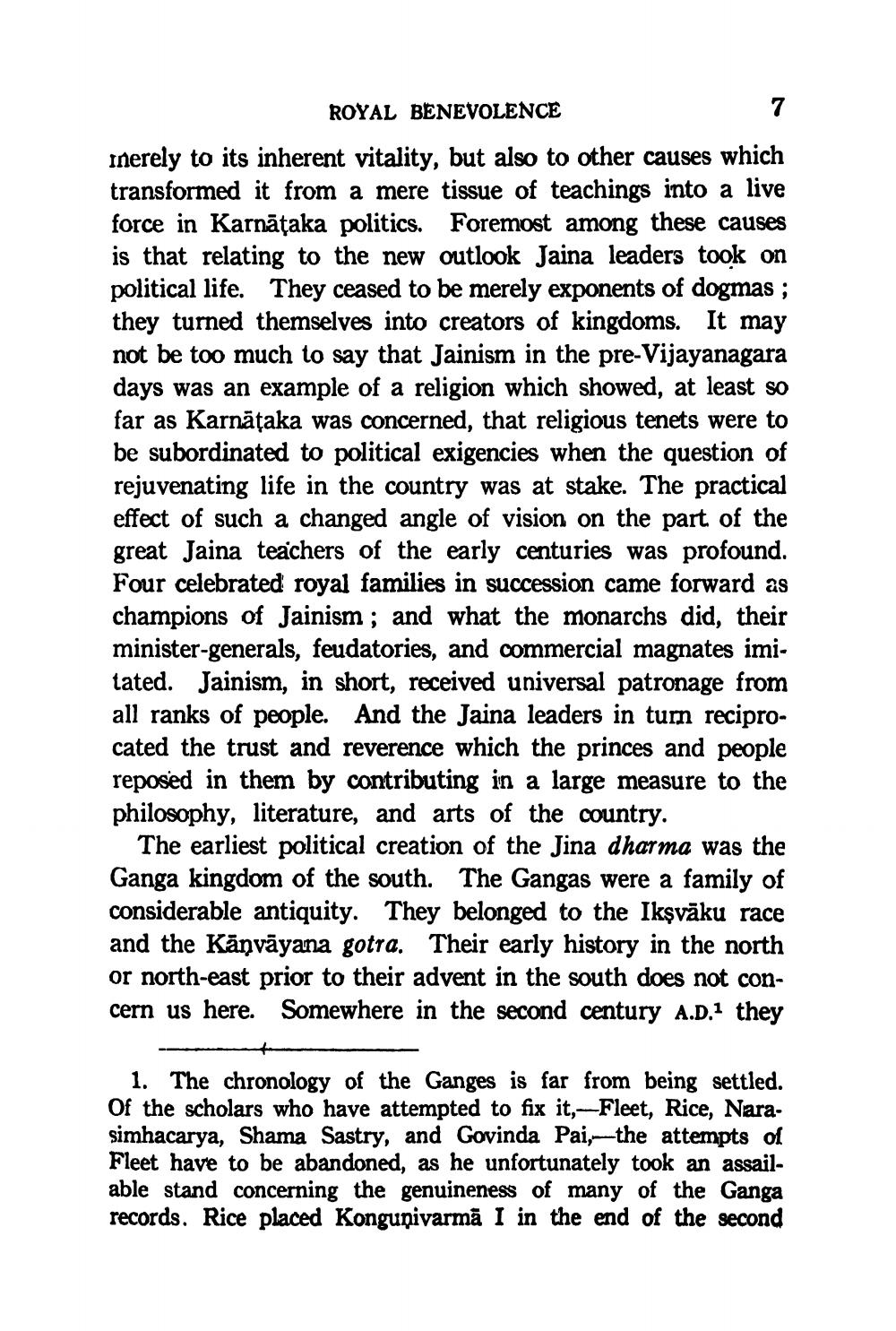________________
ROYAL BENEVOLENCE inerely to its inherent vitality, but also to other causes which transformed it from a mere tissue of teachings into a live force in Karnātaka politics. Foremost among these causes is that relating to the new outlook Jaina leaders took on political life. They ceased to be merely exponents of dogmas; they turned themselves into creators of kingdoms. It may not be too much to say that Jainism in the pre-Vijayanagara days was an example of a religion which showed, at least so far as Karnāțaka was concerned, that religious tenets were to be subordinated to political exigencies when the question of rejuvenating life in the country was at stake. The practical effect of such a changed angle of vision on the part of the great Jaina teachers of the early centuries
early centuries was profound. Four celebrated royal families in succession came forward as champions of Jainism ; and what the monarchs did, their minister-generals, feudatories, and commercial magnates imitated. Jainism, in short, received universal patronage from all ranks of people. And the Jaina leaders in tum reciprocated the trust and reverence which the princes and people reposed in them by contributing in a large measure to the philosophy, literature, and arts of the country.
The earliest political creation of the Jina dharma was the Ganga kingdom of the south. The Gangas were a family of considerable antiquity. They belonged to the Ikşvāku race and the Kānvāyana gotra. Their early history in the north or north-east prior to their advent in the south does not concern us here. Somewhere in the second century A.D.1 they
1. The chronology of the Ganges is far from being settled. Of the scholars who have attempted to fix it,-Fleet, Rice, Narasimhacarya, Shama Sastry, and Govinda Pai.--the attempts of Fleet have to be abandoned, as he unfortunately took an assailable stand concerning the genuineness of many of the Ganga records. Rice placed Kongunivarmā I in the end of the second




